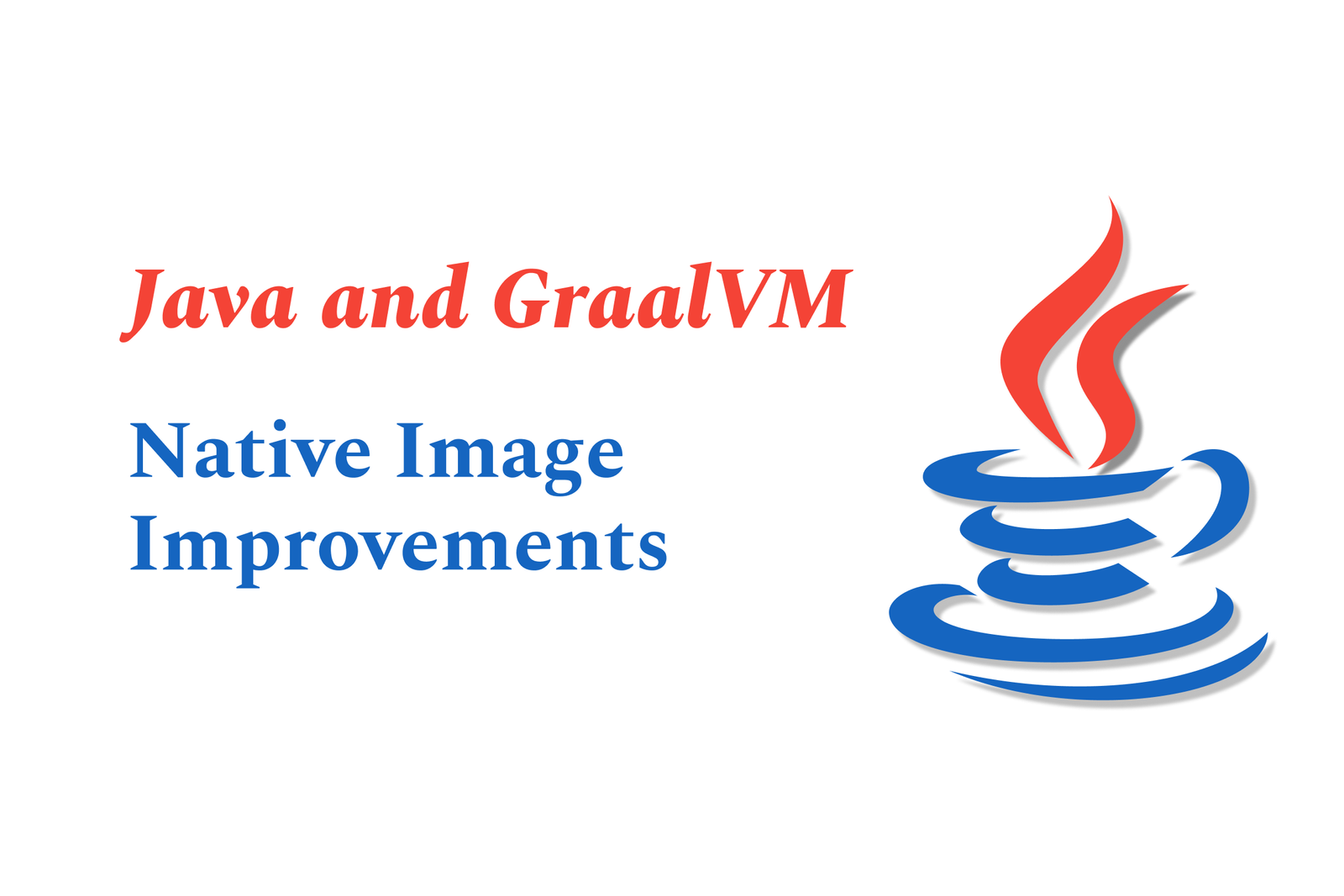Java and GraalVM: native image improvements
GraalVM's Native Image tech compiles Java apps ahead-of-time into lightweight, fast-starting executables. Recent improvements optimize multithreading and reduce image size, boosting startup speed and efficiency—ideal for cloud, microservices, and containerized Java deployments.
Java and GraalVM: Native Image Improvements
1 ) Introduction to GraalVM Native Image
GraalVM provides an advanced JDK with ahead of time (AOT) native image compilation.
Native images compiled with GraalVM start up instantly and require no warmup, unlike traditional JVMs.
They use significantly fewer CPU and memory resources, improving efficiency and reducing operational costs.
Native executables have a smaller attack surface by including only necessary classes, methods, and fields.
Popular Java frameworks (Spring Boot, Micronaut, Helidon, Quarkus) and leading cloud providers (AWS, Azure, GCP, Oracle Cloud) support GraalVM.
2 ) New Optimization for Faster Startup
BellSoft engineers introduced a novel optimization focusing on the core SubstrateVM component of GraalVM, which handles native image runtime.
The improvement targets the monitor enter/exit routines, essential for managing synchronized blocks and multithreading.
Enhanced handling of these monitor operations reduces overhead at startup, enabling faster launching of multithreaded native images.
3 ) Liberica Native Image Kit (NIK) Release 24.1 )0
Liberica NIK is based on GraalVM Community Edition and aligns with the latest JDK release cadence.
Version 24.1 )0 includes important enhancements:
A new optimization level Os focused on generating smaller native images.
Reachability metadata collection is streamlined into a single `reachability metadata.json` file rather than multiple separate JSON files, simplifying configuration and maintenance.
NIK builds provide updated JDK versions with security fixes and performance improvements consistent with GraalVM updates.
4 ) Benefits and Ecosystem Support
Native images improve Java application's cloud native capabilities by reducing startup time and memory footprint.
Smaller, faster native executables facilitate deployment in microservices, serverless, and containerized environments.
GraalVM and Liberica NIK continue to enhance interoperability, developer tooling, and integration with common Java build systems like Maven and Gradle.
These advancements solidify GraalVM as a leading choice for Java developers seeking optimized native performance without sacrificing compatibility or ecosystem support.
Summary:
Recent enhancements in GraalVM’s native image technology, including BellSoft's optimization of monitor routines and Liberica Native Image Kit's improved metadata handling and size optimized builds, contribute to faster startup times, smaller executables, and better resource efficiency. Combined with robust framework and cloud platform integrations, these improvements make GraalVM native images an increasingly compelling option for building efficient, scalable Java applications.
https://justacademy.in/news-detail/flutter-internships-&-mentorships-2025
https://justacademy.in/news-detail/java-backend-development-trends-you-can?t-ignore
https://justacademy.in/news-detail/flutter-ux-design-tips-in-2025
https://justacademy.in/news-detail/ios-19-battery-usage-apis:-monitor-your-app-efficiently
https://justacademy.in/news-detail/jdk-23-preview:-language-enhancements-explained
Related Posts
In 2025, top Angular libraries offer modern, feature-rich components and tools for building dynamic web apps. From powerful data grids to low-code platforms like UI Bakery, these libraries enhance development speed, UI design, and scalability, making them essential for Angular developers.
Migrating from AngularJS to Angular 17 involves gradually upgrading your app by running both frameworks together using tools like ngUpgrade, rewriting components in TypeScript, and adopting Angular’s modern architecture to enhance performance, maintainability, and long-term support.
Angular state management tools help organize and handle app data efficiently, improving scalability and maintainability. Popular options include NgRx for robust, RxJS-based patterns, and newer Signal Store solutions that offer simpler, reactive approaches integrated tightly with Angular’s latest features.
RxJS in Angular empowers developers to manage asynchronous data streams with powerful operators like `forkJoin`, `combineLatest`, and `zip`. Mastering these key operators in 2025 is essential for building efficient, reactive applications that handle complex event sequences seamlessly.
Angular performance optimization in 2025 focuses on improving app speed and responsiveness by using techniques like OnPush change detection, lazy loading, efficient data caching, and AOT compilation. These practices reduce load times, enhance user experience, and ensure scalable, fast Angular applications.
In 2025, Angular remains preferred for large-scale, enterprise apps with its robust, all-in-one framework, while Vue attracts developers seeking simplicity and fast development for smaller projects. Both frameworks excel, with choice driven by project needs and team expertise.
Angular Signals are a new reactive primitive in Angular 16 that enable fine-grained, efficient change detection by automatically tracking dependencies and updating only affected parts of the UI. They simplify state management and boost app performance, revolutionizing Angular's reactivity model.
Angular interview questions to prepare in 2025 focus on core concepts like components, directives, data binding, routing, and dependency injection, along with TypeScript mastery and latest Angular features to ensure strong practical knowledge for building scalable, efficient web applications.
AngularJS reached its official end of support in January 2022, meaning no further updates or security patches. To ensure app security and performance, developers should consider migrating to modern Angular versions or seek third-party long-term support options if immediate migration isn’t possible.
The Angular Roadmap 2025 highlights upcoming features focused on improving developer experience and performance, including zoneless Angular, Signals integration, enhanced Forms, async data handling, improved HMR, and expanded Angular Material/CDK enhancements, driving modern, efficient web app development.










